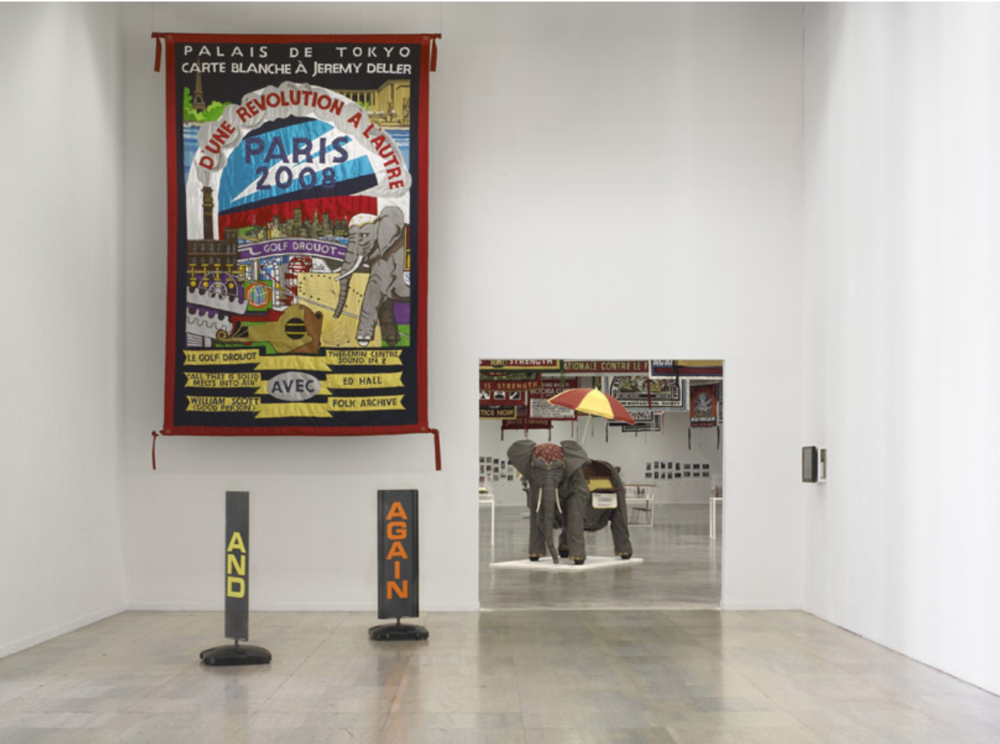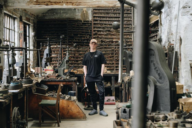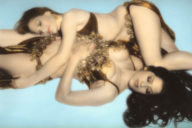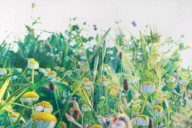JEREMY DELLER AND HIS FOLK ARCHIVE CREDENTIALS
Ah those wonderful British eccentricities; the knitted tea cosy, the Morris dancer, the church fete, the world gurning championship, the mechanical elephant, tar barrel rolling. You may not have been fortunate enough to have witnessed all of these delights but luckily for us the King of Folk art Mr Jeremy Deller is the undisputed heavyweight and he’s back punching his way through the tapestry of our fine heritage of creativity. What started as a small collection of modest objects and pictures has turned into years of seeking the answer to the question; what constitutes present day folk art in our fine land?
We question Jeremy Deller about his folk archive credentials.
As part of the Turner Prize 2004, your ‘History of the World 1997-2004’ showed a giant mind map demonstrating working class history, which referenced ‘brass band’ at one side and ‘acid house’ as the other extreme – with ‘civil unrest’ at the centre. Is this the driving force for ‘folk archive’, in a nutshell? If so, how much importance do you place on the creative output of the working classes?
These are two separate works, the driving force for folk archive is the everyday creativity that we see all around us in the UK, there is a section on politics which inevitably touches on civil unrest and disobedience but that is only a part of a much larger show.
Apart from showcasing creative talent, this exhibition celebrates cultural oddities and national eccentricities; how do you ensure that you are not seen as patronising the artists/ individuals involved?
You treat them and their work with the respect it deserves and you exhibit it with the same way.
What are you criteria for selection of the events/ pieces in folk archive? How do you ensure that it reflects social inclusion, spanning all sectors of the community?
It is an entirely subjective process and is constrained like any project by time and the budget or lack of it in this respect. It is also, because of its remit, an endless process that has no cut off point.
Your work has revealed pockets of elitist snobbery in some sectors of the art world – how much has this surprised you? Does your new ‘Turner prize winner’ status conflict with the integrity of this project, or add to its validity?
Inevitably some critics were horrified that they had to see and then write about the show at all, it is to be expected, it was one reason why we did it to wind-up those people. The Turner Prize I think is neither here nor there.
Joseph Beuys famously said “everyone is an artist” and Marcel Duchamp exhibited ‘ready made’ objects in public galleries. How do you feel Folk Archive contributes to moving these ideas forward?
A very big question, to be succinct though this kind of material and behaviour existed before either of these quotes and so it has no effect on the material.
You were criticised by some quarters for your films in the Turner Prize lacking in technical sophistication, and replied by pointing out that you are not a documentary filmmaker. How would you defend similar criticism towards the work in Folk Archive?
Much of the work is technically very sophisticated in the show and when it is not it is for a reason.
I read that you see yourselves as Robin Hood and Friar Tuck characters, metaphorically stealing from the rich and giving to the poor (I like this by the way!!) Can you expand on this for me please? And does this also mean that you particularly like green tights?
This was a joke made in front of a journalist; there is a lesson there.
In the USA, Folk Art is widely celebrated and such galleries are commonplace. Why do you think it has taken us so long to recognise folk art in the contemporary art arena?
The class system, snotty London media afraid to be seen as uncool etc there are many reasons, London is a big problem in this respect, I’m sure if Pete Doherty said he liked folk art they would fall over themselves to feature it but until then it is still marginalised.
Could folk art already be approaching mainstream, especially with British artists such as Tim Noble and Sue Webster’s taxidermy, Tracey Emin’s embroidery and Jake & Dinos Chapman’s model making featuring in the heart of contemporary art?
Folk art is more mainstream than contemporary art, contemporary artists are the outsiders not the British Public, remember all those people you mentioned above live within 400m of each other.
Finally, will you consider my grandad’s giant leeks for inclusion in the archive? They are prize winning!
Only if he uses them in vegetable animal sculptures. We have to be strict here.
Laura Gilmour
First appeared in Fused Magazine issue 27










[…] work could be a Jeremy Deller readymade, a dispatch from a time before irony overload. It shows a more functional civic life than […]